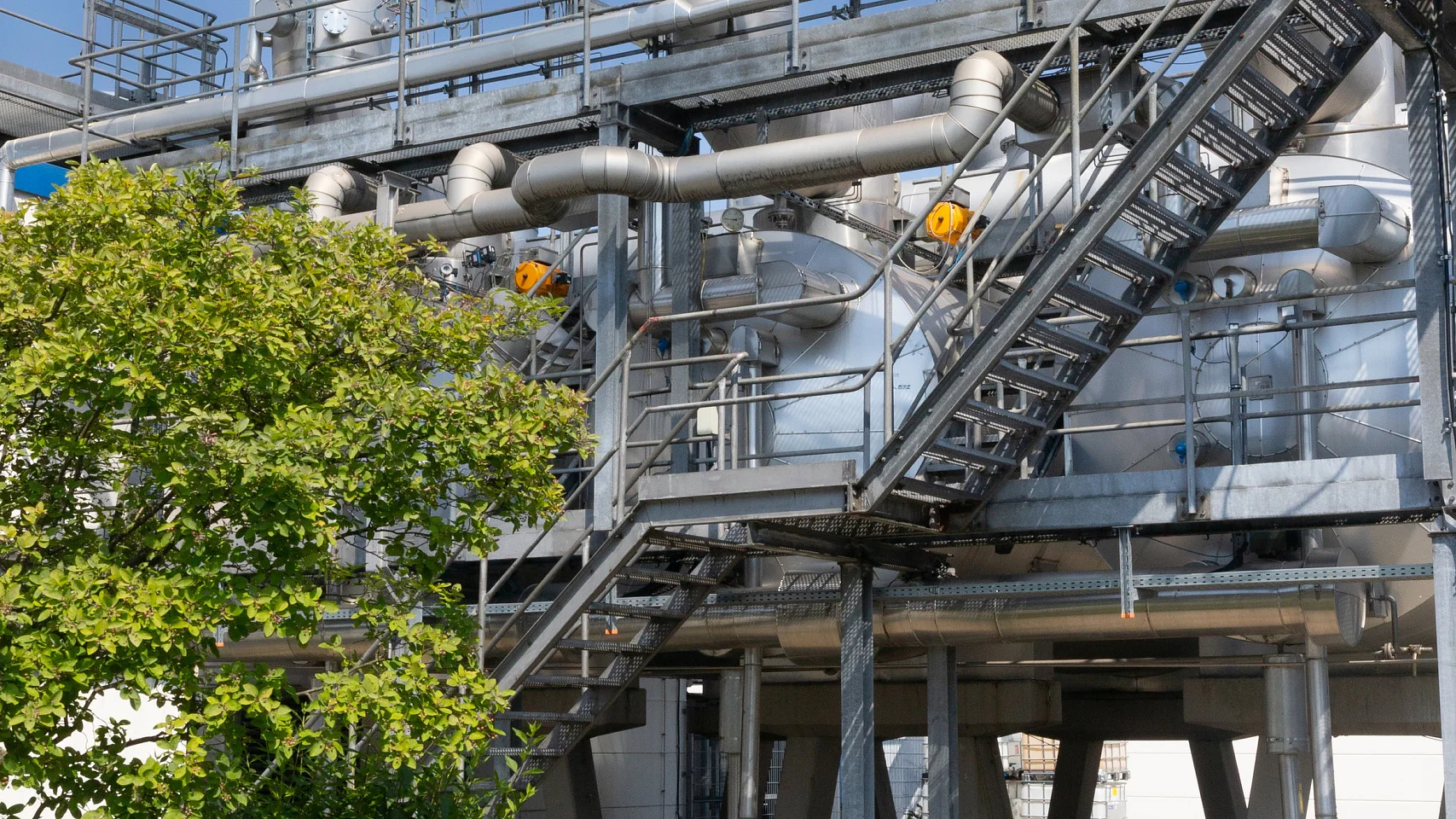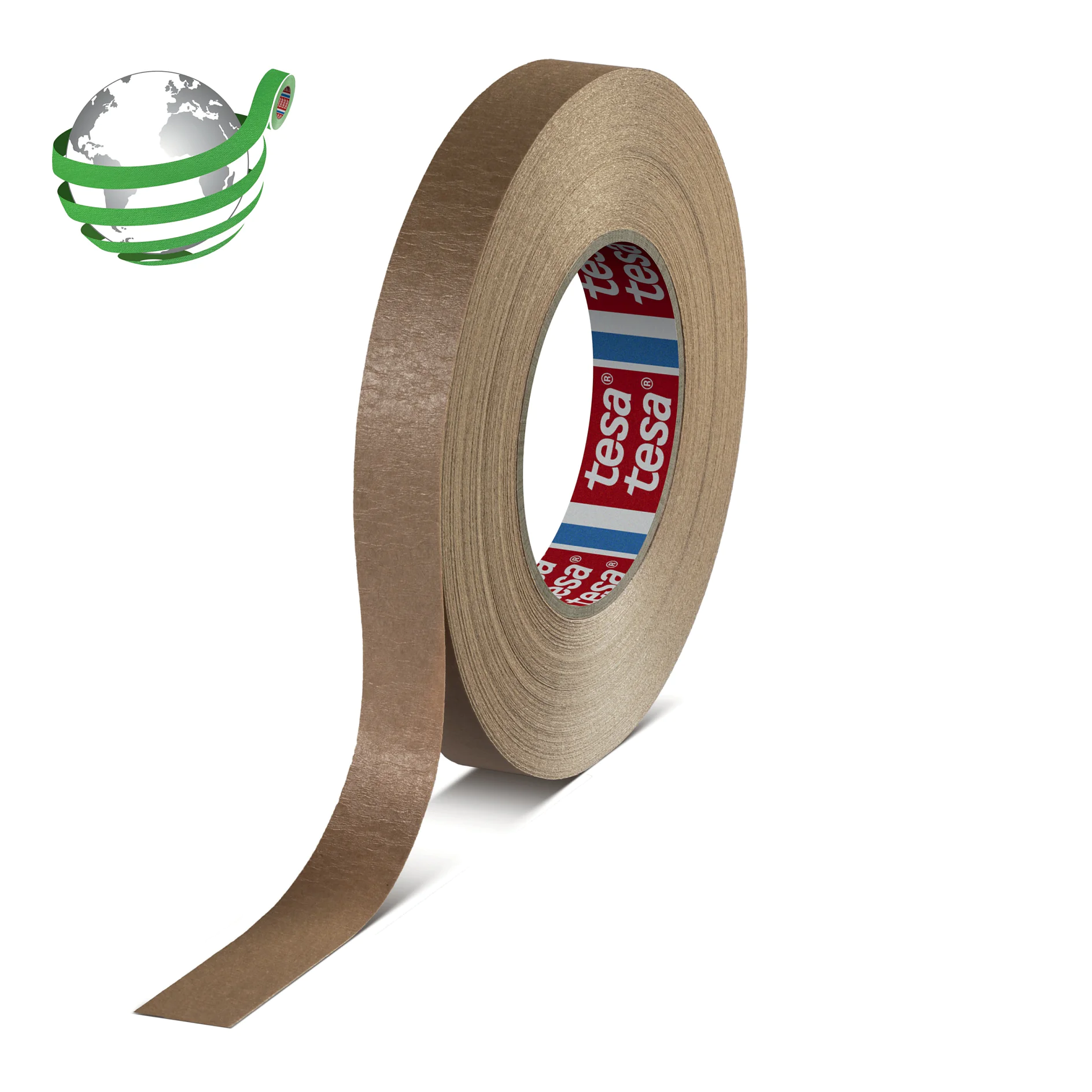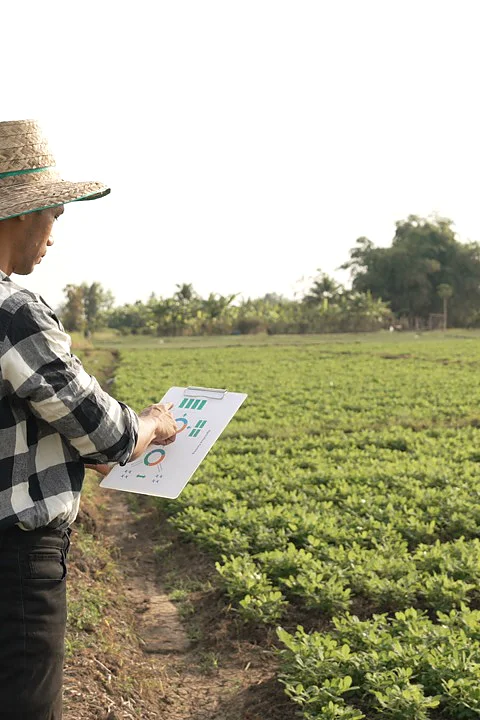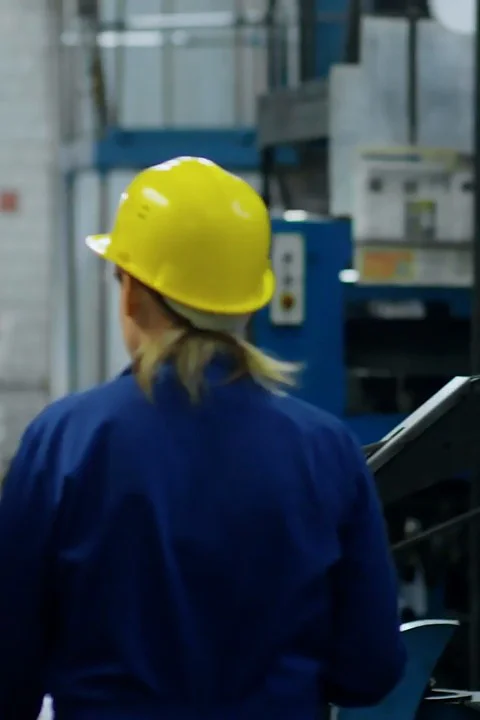Imagine a world without waste. At tesa, we’re determined to make that vision a reality. Our teams reduce waste, reuse materials and enable recycling to accelerate the transition to a circular economic model where all material re-enters the economic cycle and as little as possible gets thrown away.
70% of the material used in our products and packaging will be recycled or bio-based by 2030.
tesa® 64295 (opens in a new window or tab) is our first ever adhesive tape that is certified as recyclable. The strapping tape is used to secure loose parts of household appliances during transportation. It meets criteria for recyclability (see infobox). And because its backing material is made of paper instead of plastic this means the tape can enter recycling processes together with other paper materials.







